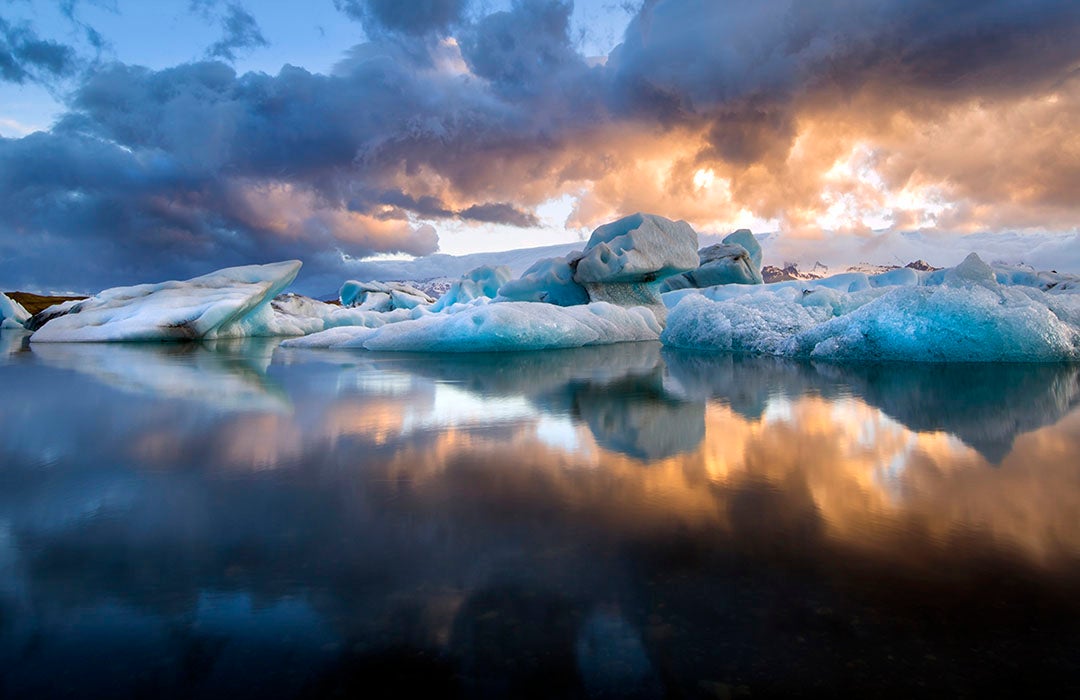
Drekagil, also known as the dragon gorge, is situated in the northern part of the Icelandic Highlands. It is a fascinating place with a fitting name, filled with lava formations that resemble strange creatures such as trolls and dragons.
When hiking through the narrow gorge, one can’t help but feel that otherworldly forces are present. Along the way, passing by steep cliffs, you'll need to climb minor rocks by a small stream that originates from a waterfall enclosed in an almost cave-like cliff at the deep end of the gorge. It is one of those otherworldly places that you'll often find in Iceland. An inspiration for your imagination and an artistic challenge while holding the camera.
A Moon-Like and “Otherworldly” Place
For photographers, this is a place for the wide-angle lens, a relatively high ISO, a tripod, and aperture priority.
Although the hike to the bottom of the gorge does not take long, it is a slow hike with many stops along the way while speculating on poetic motives.
In the summer of 1967, eleven astronauts – including Neil Armstrong – camped in front of Drekagil when travelling to nearby lava fields to prepare for the moon landing two years later. The gorge was a part of their exploration. This space program preparation only demonstrates how different and “otherworldly” the Drekagil and the surrounding areas are. It is one of the many places in Iceland that people refer to as “in the middle of nowhere.”
 Drekagil gorge in the Icelandic highlands. Photo by: 'Einar Páll Svavarsson'.
Drekagil gorge in the Icelandic highlands. Photo by: 'Einar Páll Svavarsson'.
A Long History of Volcanic Activity
One of the most active volcanic systems in Iceland, the Askja caldera, is a popular tourist attraction and within hiking distance from Drekagil. The hike from Drekagil to Askja takes about seven hours. Although it is an appealing trail, you should only attempt it with proper preparation as the weather can be rather unpredictable in the area. The walk is highly photogenic.
The other and more straightforward way to get to Askja is to drive to a parking lot to the north from Drekagil and to hike the short distance to the caldera. This hike will take you about 40 minutes and is a marked trail. The caldera is filled with water and is actually a big lake.
Although Askja has erupted six times in the last century, wherein the previous eruption took place in 1961, the most devastating eruption in historical times was in 1875. During that eruption, a small crater remained by its side, which today has warm water at the bottom.
The crater is a beautiful construction of nature in any sense of the word and a feast for photographers but has the most horrible name, Víti, which translates as 'Hell' in English. The path down to the bottom of the crater is both steep and slippery, but worth it when you get down there with a camera. It is a colourful and captivating place.
 Viti crater and Askja (caldera) lake. Photo by: 'Einar Páll Svavarsson'.
Viti crater and Askja (caldera) lake. Photo by: 'Einar Páll Svavarsson'.
Holuhraun: The Latest Product of Volcanic Activity in Iceland
Nearby to the Askja volcano is the Holuhraun lava field, which is just a few kilometres drive south. The magma that formed the Holuhraun lava field surfaced in 2014 and built a vast lava carpet on the sand. It is one of the biggest lava fields in historical times in Iceland, second only to the Lakagígar eruption in 1783.
The Holuhraun area provides photographers with an opportunity to photograph the newest landform in Iceland – fresh lava from the magma hot spot that moved about in many chambers under the crust created the lava field that you see today. This landscape is as raw as it gets—a black and edgy lava field with no vegetation.
 Holuhraun is a carpet of lava sitting on sand near Drekagil. Photo by: 'Einar Páll Svavarsson'.
Holuhraun is a carpet of lava sitting on sand near Drekagil. Photo by: 'Einar Páll Svavarsson'.
Visiting Drekagil, Askja and Holuhraun
The drive to drive this part of the Icelandic Highlands requires a good 4X4 vehicle, since you'll need to travel along dirt roads and cross rivers. A good modified 4X4 vehicle is recommended.
The most popular way to get there is via the mountain road F88 from the Ring Road Number 1, a few kilometres east of Mývatn Lake. From the intersection, just drive to Herðubreiðalindir on the road called Öskjuvegur. Then you can take the mountain road F910 to Drekagil.
At Drekagil, you will find a visitor centre with a wealth of information about the Vatnajökull National Park and how best to get to Drekagil, Askja, and Holuhraun.
About the author: Einar Páll Svavarsson is a landscape photographer based in Iceland. You can find more of his work on his website, or by following him on 500px.
Explore the mysterious Highlands of Iceland. Join us on this Þórsmörk Photography Day Tour to witness the lunar landscapes!












